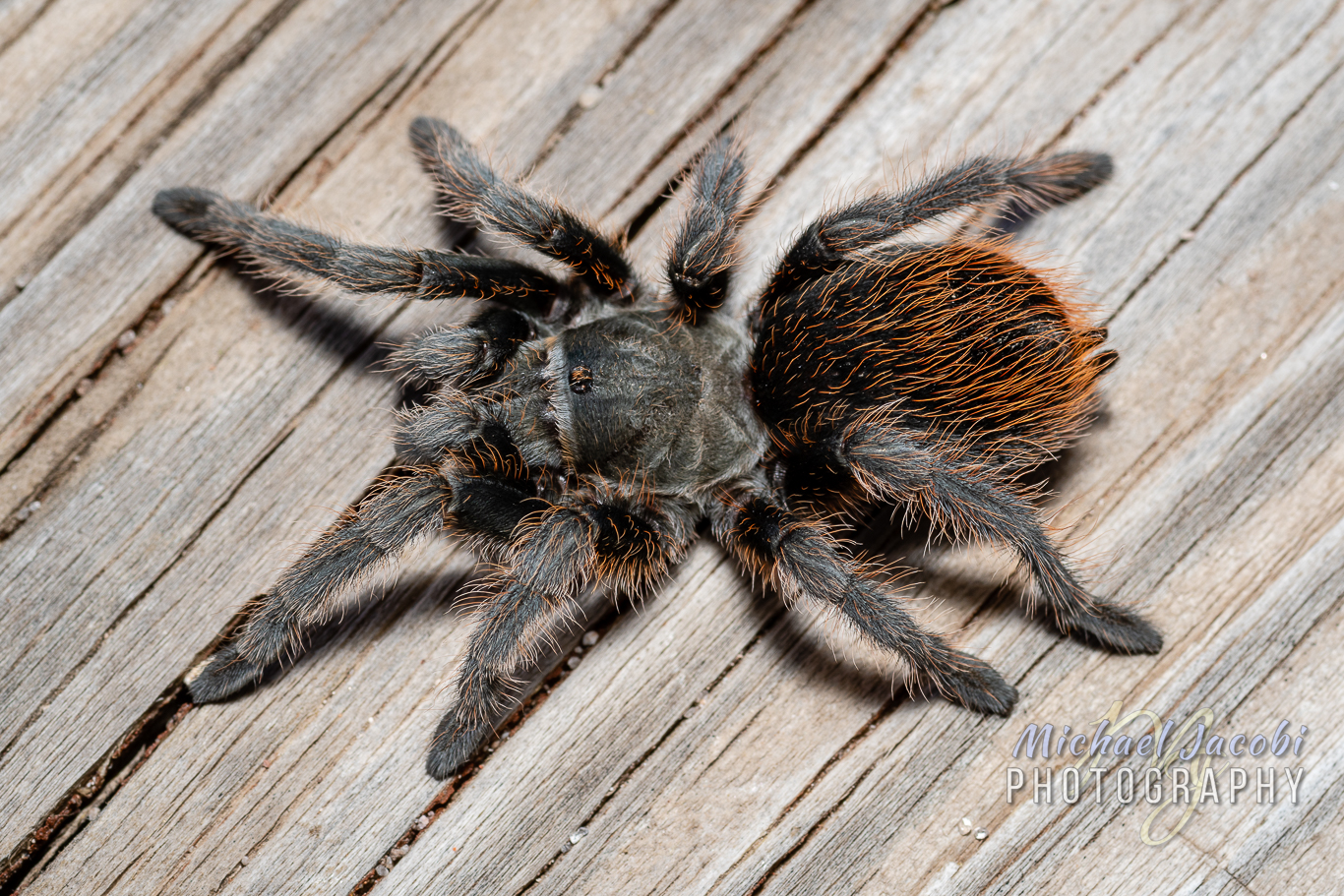HAPPY OCTOBER!
Three weeks remain for me at my homestead before a five-week sabbatical. I will return to my camp at the USFS Admin Mule & Horse Corral above the Cave Creek Canyon Visitor Information Center (VIC) in the Chiricahua Mountains on the last day of November. I returned to my little paradise in the canyon this year on February 23, so when I pull out during the last few days of October it will be eight months since my Wheelhouse moved. When I return for the beginning of December, I will begin a seven-month stay that might extend a bit beyond that. However, I have only committed to resuming my caretaker & host duties through June. I may choose to spend the 2020 monsoon season chasing snakes in other ranges and doing something much different. We will see. A pikey/gypsy/tinker needs to move sometimes.
““The World Is Big And I Want To Have A Good Look At It Before It Gets Dark.” - John Muir”
Green Lynx Spider (Peucetia viridans), Cave Creek Canyon
It is October 5. My free time will now switch to hunting for the montane tarantula species Brent & I found at the top of the Chiricahuas last Halloween. I have spread the word among local hikers to be on the lookout for specimens for me, but I will now devote time to searching for it until I am joined by Brent, Chris, Chad, and Tom on October 25-26. Snakes can still be found in October, but I won’t focus on them. Any I encounter will be more by chance. My first rattlesnake of October is the Mohave (Crotalus scutulatus) shown below and observed on the first day of the month. I had made a trip up to Willcox for banking and groceries. It is 72 miles northwest, and where I will be living during my sabbatical from life and responsibilities here in Cave Creek Canyon for November. With cool nighttime temperatures now (ca. the mid-50s), most snakes have become more active during the daytime, and I had hoped I might see something during my return drive in the late morning when the day’s early chill had warmed.
I had seen a disturbing number of road-killed mammals on my drive out of the foothills up to the interstate on my way to Willcox: several skunks, a badger, a gray fox, and javelina; plus a dead-on-road barn owl. I cleared all off the road for the safety of scavengers but saw no reptiles live or dead. On the return drive, I was driving along the dirt Foothills Road and not only was there more traffic than usual, but there was also a road grader at work. I was discouraged and doubting that I might see a live snake. I had increased my speed, anxious to return home. I saw a truck approaching me at reasonably high speed and moved over so we could pass each other. As it got closer, I realized it was Border Patrol, the vehicles I most often encounter on the primitive roads. As he cruised by, I soon noticed a snake in the dust cloud the truck had left, and it was thrashing a bit as if it was hit. I slammed on my brakes, skidding in the red dust as I steered towards the roadside desert. I was happy to discover that it had not been injured at all and quickly grabbed my tongs and a snake bucket from the rear of my truck. As I approached the very dangerous Mohave Rattlesnake, it began to strike at me repeatedly. Only wearing flip flops for what was just an impromptu errand run, I was happy to have five-foot-long tongs. Still, I had to jump back several times as this particular buzztail was the most agitated and defensive I had experienced throughout the entire year. I grasped it safely in my Gentle Giant tongs, and it thrashed about so much I rapidly moved it to the dirt and released it so it wouldn’t be injured. I got another grip mid-body and pushed it into the bucket with much difficulty as it continued to strike.
I wanted to find a decent place to photograph it, but I also wanted to move it to safety away from the road and get us out of sight of passing cars that might stop and gawk. I don’t like worrying about bystanders who want to try to get a quick smartphone shot. So, in improper footwear, I moved into the creosote, mesquite, and cactus off the road, wishing I had my boots on. Before long, I was kneeling in cactus spines trying to pose the ornery snake as its striking did not relent. I tossed my floppy hat over it - that old trick for settling a snake into a coil pose for photographs. It was uncooperative, and several attempts were necessary. The photo below, which unfortunately has a stem across the snake’s body, is the best I could do before I chose to let the snappy bugger alone.
Mohave Rattlesnake (Crotalus scutulatus), Chiricahua Foothills
My last day at the VIC will be October 23. The next day I have free to prepare my Wheelhouse for moving, and the day after that, Chad and Tom will join me here at my homestead. The following morning we expect arachnologists Brent Hendrixson and Chris Hamilton. Then the fieldwork will begin and last through November 2. On November 3, I will start four weeks of relaxation. However, I don’t imagine I will sit completely still. In addition to the possibility of continuing to search for Fall/Winter active Sky Island tarantulas, I am pondering trips for landscape photography with destinations like Organ Pipe and the Grand Canyon in mind.
MJ











